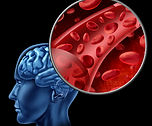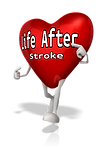St Mary's Hospital Stroke Rehabilitation Unit
Phoenix Park, Dublin, Ireland



Welcome to Isolda Stroke Rehabilitation Unit

Hemiplegia or Half Paralysis
A condition which affects one side of the body. This is the result of an injury to the area of the brain which sends messages to the muscles in the arms and legs.
The loss of power may affect all the muscles on the affected side of your body including your arm, leg, trunk and face. This can affect your balance when sitting, standing and walking while weakness in the face can result in drooping of the face and/or drooling.

Loss of Sensation on One Side of the the Body
Loss of sensation on one side of the body loss of sensation can result in neglect of one side of your body. This sensory disturbance can lead to difficulties in knowing your right from left and your judgement of depth and distance.

Loss of Vision
Loss of vision- following a stroke, you might experience loss of vision. You may even be unaware of the visual problem. The loss of vision may result in bumping into furniture or doorways on the affected side.

Communication Difficulties
Communication difficulties are common post stroke. Communication difficulties can affect people in different ways.
A person may have difficulties with:
-
Understanding language
-
Saying the right words
-
Putting sentences together
-
Speaking clearly due to weak muscles in your mouth
-
Coordinating the muscles needed for speech
-
Reading and writing

Weight Loss After Stroke
Many people experience some weight loss after stroke, especially in the weeks following the stroke. This weight loss is usually unintentional and unplanned and can result in a loss of muscle tissue. Losing muscle tissue can negatively affect your progress with the physiotherapist and occupational therapist. Weight loss can occur as a result of other complications caused by the stroke, such as swallowing difficulties, or difficulties feeding yourself, especially if your hand or arm has been affected by the stroke. Some people may experience a low mood after stroke, and this can often affect your appetite and your dietary intake. You may need assistance at mealtimes to help prevent this weight loss, and you may be referred to see the Dietitian to help give you advice on the best foods and fluids to choose, to help keep your weight stable and to build up your muscle tissue again.

Swallowing Difficulties (Dysphagia)
Dysphagia is a difficulty with eating, drinking or swallowing. This is very common after a stroke.
Difficulties you might notice include:
-
Coughing when you eat / drink
-
Food ‘getting stuck’ or ‘going the wrong way’
-
Food / drink spilling from your mouth
-
Problems swallowing your tablets
-
Choking

Loss of Intellectual or Thinking Ability
Loss of intellectual or thinking ability- following a stroke you may experience difficulty with attention, concentration, memory, problem-solving and learning new information.

Emotional Changes
Emotional changes- after a stroke you may experience changes in your mood such as shock, anger, frustration, anxiety, depression, feeling of loss, loneliness, lack of self-control and denial.
It is important to speak to the staff on Isolda Ward about your feelings.
What are the common effects of a stroke?
Following a stroke you may experience the following problems:
What is a Trans Ishaemic Attack (TIA) ?
TIA refers to the sudden and brief disturbance (usually for a few minutes) of any of the many functions of the brain.
A TIA may cause brief loss of vision, loss of speech or weakness of one side of the body. You will usually recover within a few minutes and you won’t have any obvious ongoing disability. TIA’s are caused by small clots.

Introducing Your
Stroke Rehabilitation Pathway


“My rehabilitation pathway” is a record of your stroke rehabilitation journey from the day of admission to Isolda Stroke Rehabilitation Unit until your discharge from our service.
On admission to Isolda Unit a rehabilitation nurse will introduce the pathway to you and to your family. Each element of the pathway and your expected contribution will be explained to you by the nurse in detail. Your personal details will be recorded on your individual pathway.
“My rehabilitation pathway” comprises of key information on stroke, stroke rehabilitation and your plan of care and progress throughout your journey.
“My weekly progress” in your rehabilitation pathway will provide information on your weekly schedules. It will also provide continuous notes from the rehabilitation team on your progress throughout your stay. You will have the opportunity to fill in your own progress each week. With your permission your family can include their thoughts and concerns about your stroke rehabilitation progress.
On your discharge from Isolda Unit you will keep your Rehabilitation Pathway with you as your journey continues at home with follow up and support in the Out Patient Department in St Mary’s Hospital.
Above screen shot of 'My Rehabilitation Pathway'

ISHAEMIC STROKE
This is where there is a blockage of blood vessels, which causes a lack of blood flow to the affected area
1
Types of Stroke

2
HAEMORRHAGIC STROKE
Rupture of blood vessels, with leakage of blood in affected area
Isolda Stroke Rehabilitation Unit provides rehabilitation care for patients over 18 years of age.
Our unit is located on the ground floor. There are 10 beds divided across three rooms, a dining room and a sitting room. The gym is also located on the ground floor adjacent to Isolda Unit.
Our nursing team consists of 10 nurses and 3 health care assistants trained in stroke rehabilitation who provide 24 hour care, 7 days a week. The nursing team works in partnership with the multidisciplinary team.
We will support you through your rehabilitation programme as outlined by the therapists and will provide education for you and your family on many aspects of your personal care needs. In addition our ward catering department works with the dietetics departments and speech and language therapist to cater to all your nutritional needs.
It is our aim to provide a comprehensive rehabilitation programme designed especially for you during your stay in Isolda Unit and in preparation for your discharge.
One of our rehabilitation nurses will introduce you to the “Life After Stroke - My Rehabilitation Pathway” which is your personal record of the different stages of your rehabilitation journey. It will provide up to date information on your progress. We look forward to supporting you on your rehabilitation journey with us.
Charina Hogan, Ward Manager , Isolda Unit
What is a Stroke?
Your brain is made up of cells and nerves control your body. They are responsible for functions such as movement, cognition, perception, planning, swallow, communication, vision and continence.
A stroke is a type of brain injury where the blood supply to the brain is interrupted. Every stroke is different and people can be affected in different ways.
There are two different types of stroke:
-
Ischemic Stroke: a blocked vessel
-
Haemorrhagic Stroke: a burst blood vessel causing a bleed into the brain
How stroke affects you will depend on which area of the brain has been damaged and how badly it has been damaged. It will also depend on how well you respond to treatment (such as thrombolysis and thrombectomy) and to rehabilitation.
Charina Hogan,
Ward Manager,
